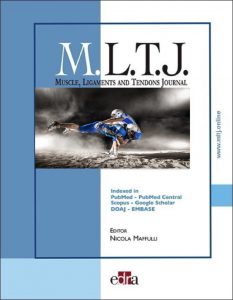Publications

Impact of the Location of Myometric Measurement Points on Skeletal Muscle Mechanical Properties Outcomes
Authors: J. Mencel, J. Marusiak, A. Jaskolska, A. Jaskolski, K. Kisiel-Sajewicz
Affiliations: Department of Kinesiology, Faculty of Physiotherapy, University School of Physical Education in Wroclaw, Wroclaw, Poland
Journal: Muscle, Ligaments and Tendons Journal - July/September 2021, Volume 11, Issue 3, Pages 525-535 (DOI: 10.32098/mltj.03.2021.18)
-
Field & Applications:
- Methodology
Background: The aim of this study was to assess to what extent changing the measurement point affected the results of myometric parameters describing muscle mechanical properties assessed by a MyotonPRO® device in three skeletal muscles: the biceps brachii (BB), tibialis anterior (TA) and rectus femoris (RF). We hypothesised that muscle mechanical properties would change differently as the myometry probe was moved towards the proximal or distal part of a muscle.
Methods: Sixteen untrained, healthy, young male students participated in the study. Myometric frequency, stiffness, decrement, relaxation and creep parameters were measured in the BB, RF and TA of the right and left sides of the body at five measurement points: the central point of a muscle, and points shifted by 10% and 20% of the muscle length proximally and distally from the central point. A multivariate: 5 (measurement points) × 3 (muscle) analysis of variance (MANOVA) for each of the parameters separately was used for the main analysis.
Results: MANOVA showed that measurement point (the location), muscle and interaction between measurement point and muscle have an impact on all measured parameters (P < 0.05) except interaction between measurement point and muscle in relaxation parameter (P > 0.05).
Differences in myometric values were shown for both measurement points located distant from each other, as well as for those located adjacent to each other.
Conclusions: Our results emphasized the variation in muscle properties along the long axis of chosen skeletal muscles expressed by myometry outcomes.
Keywords: creep, elasticity, muscle-tendon unit, stiffness, tone, myoton
Our results emphasised the variation in muscle properties along the long axis of chosen skeletal muscles expressed by myometry outcomes.


